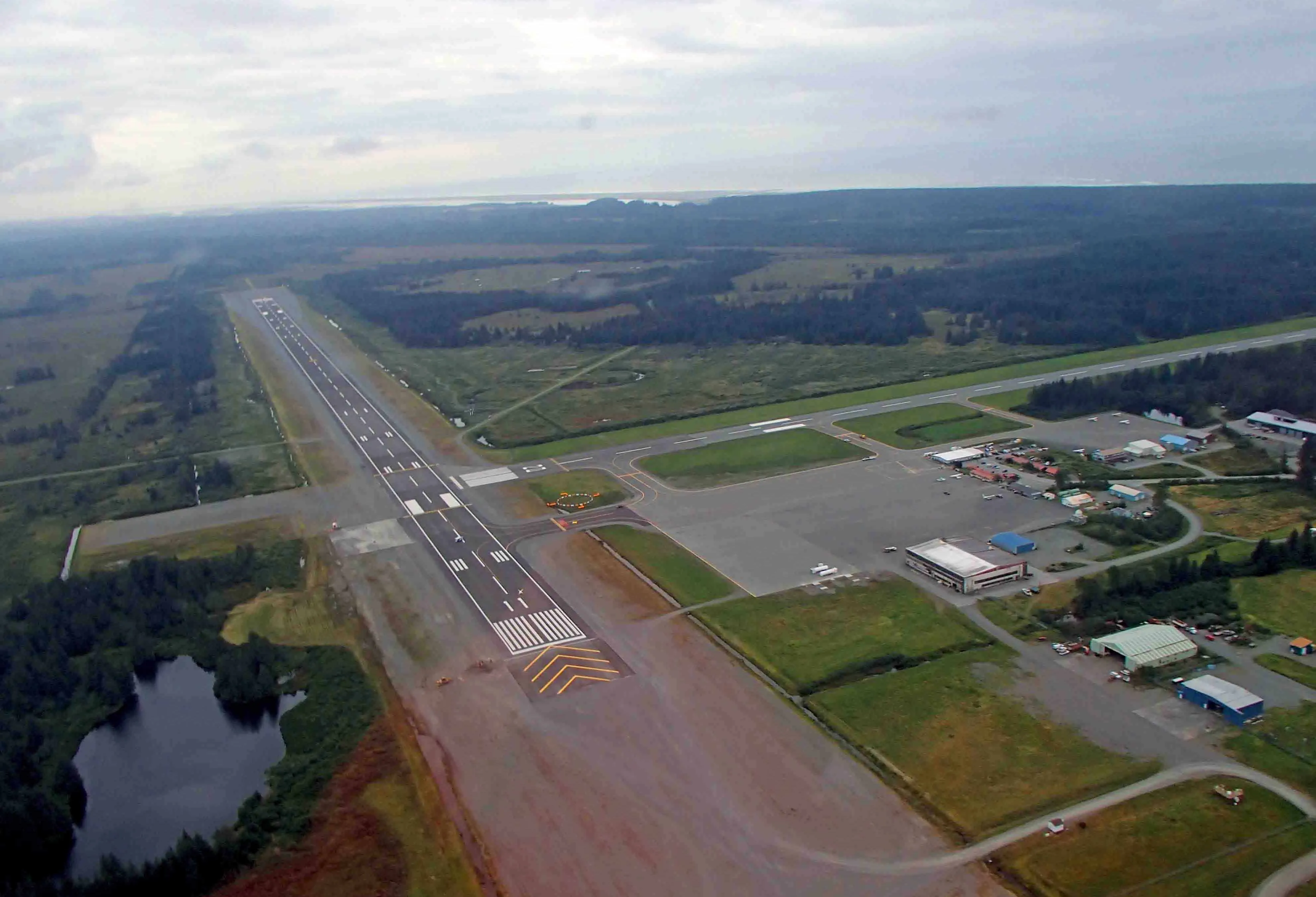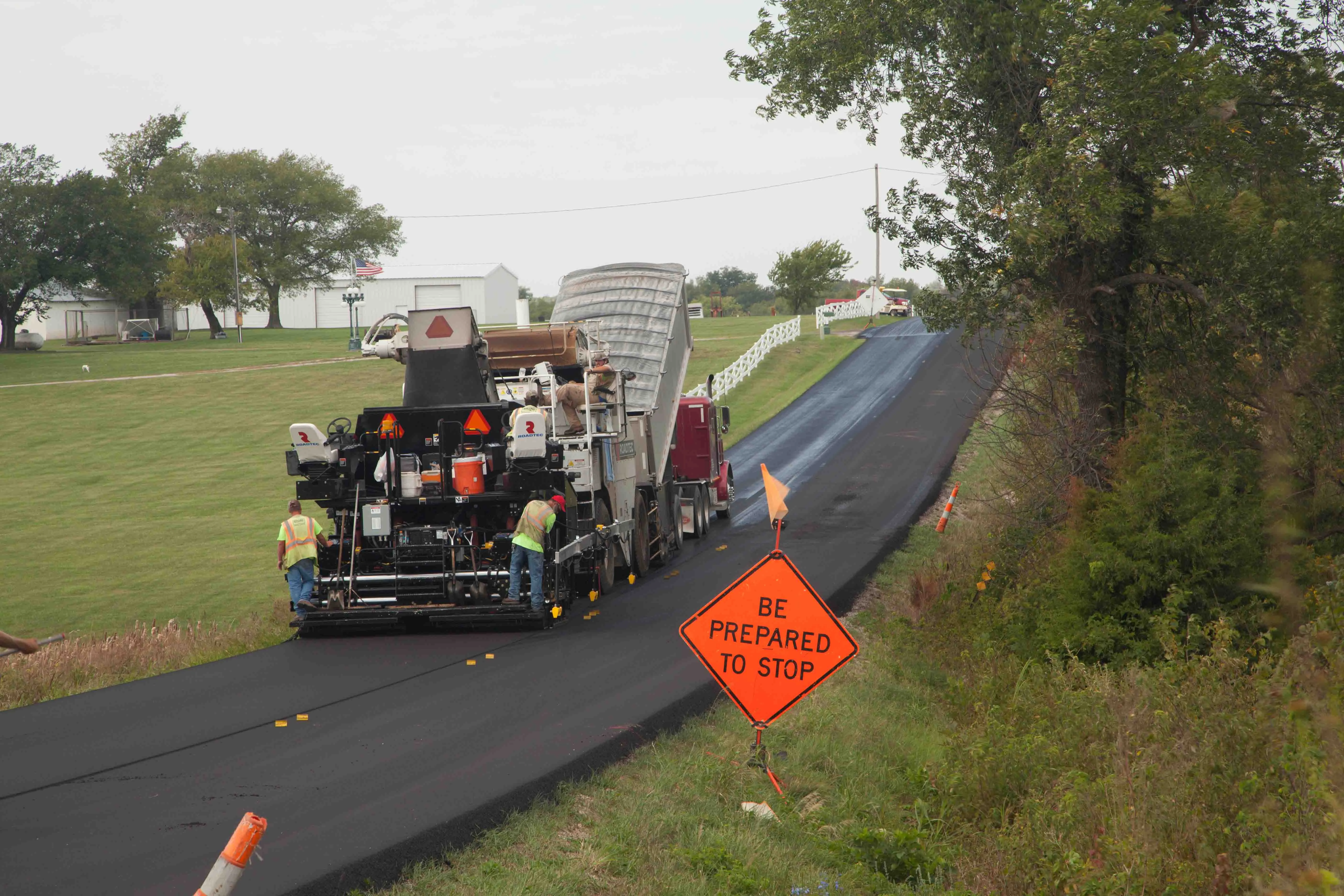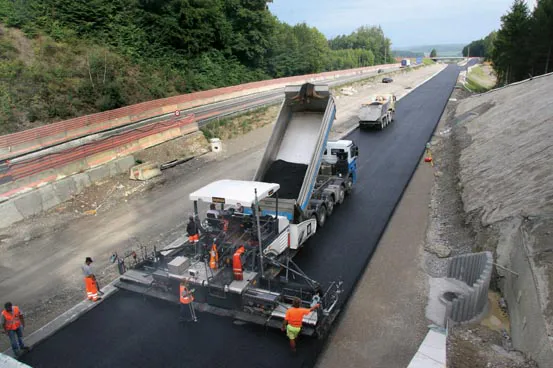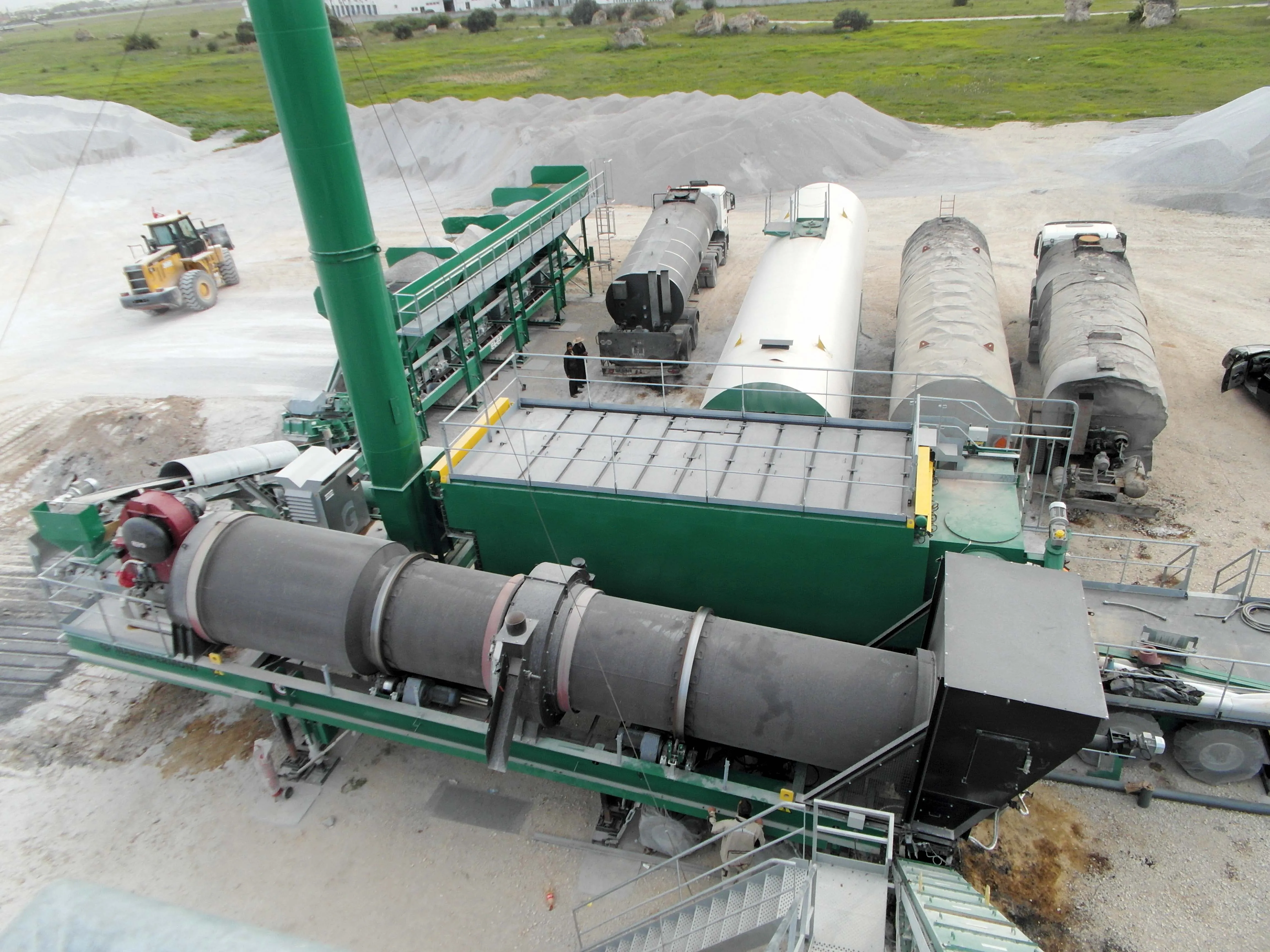
Specifications for the 45.7m-wide, 2,621m-long runway called for full-depth removal of the old runway, placing a 38mm levelling course and topping it with two 76mm surface lifts. But the work revealed hidden problems.
Built in the 1940s, runway 13/31 was in bad shape. With severe, widespread cracking and no resurfacing in more than 20 years, the runway surface was badly deteriorated. Years of winter frosts had settled the ground, resulting in high and low spots in its elevation.
When Kilgore milled 178mm of worn asphalt off the old runway, larger elevation variations below the surface confirmed that the levelling course was going to be challenging. Kilgore had to add varying amounts of 19mm aggregate to restore the grade. Instead of the anticipated uniform 38mm levelling course described in the site plan, the levelling course varied from 76-305mm under the runway.
Four Cat CB64 compactors equipped with Intelligent Compaction handledbreakdown and intermediate compaction, aided by a CB44B compactor equipped with a side cutter for trimming cold edges where necessary.
Kilgore used Cat AP1055D and AP1055E pavers, both equipped with the latest 3D paving technology, linked to onsite Trimble universal total stations. Two Weiler E2850 material transfer vehicles (MTVs) were paired with the Cat pavers to provide a steady flow of asphalt.
The Caterpillar Paving pavers were linked to onsite Trimble universal total stations. Tripod-mounted transmitters were strategically placed around the job site and spaced about 152m apart. This technology enabled Kilgore to constantly monitor the erratic elevations and adjust the levelling course to produce the correct elevations.
Phase one involved the end of the runway where it intersected with a crossing taxiway. Although only 10 days were allowed to complete phase one, Kilgore completed the work on schedule. Phase two, an intersection with another runway, intensified pressure on the crews with only eight days allowed to complete that segment. During that time, the entire airport had to be shut down, while weather issues forced some longer workdays.
To maximise efficiency, Kilgore operated the paired transfer vehicles and pavers in echelon. These resurfaced the 45m-wide runway by laying down five 9m-wide mats over 152m lengths. Echelon paving boosted production and reduced the number of hot-to-cold longitudinal joints. The mix design specified all virgin 19mm aggregate and PG72-28 binder for the surface lifts.
The MTVs helped keep the mix at a uniform temperature, while there were no handling problems or segregation issues. To match material delivery, the pavers ran at just 3m/minute. The crews achieved 80% continuous operation and laid down 254 tonnes/hour and 2,721tonnes on most days.
The specified runway crown was a slight, but important 1.5% pitch to both sides to enable adequate drainage. Compared to a 15% out-of-tolerance grade and slope allowance, Kilgore held to 2.43% over the entire length of the runway. Density averaged 97%, and exceeded the 93% specified for joints as verified by inspections.
The Kilgore crews hit the 6mm smoothness tolerance for length and width, also meeting the target for bump detection, having no longitudinal or transverse deviation in excess of 6mm.
In cooperation with SITECH, support was provided well before the project began. The Kilgore crews were trained on the operation of the 3D pavers and the SITECH system during a four-day seminar at the dealership. The seminar included both classroom sessions and simulated hands-on sand paving using a unique 3D model.









